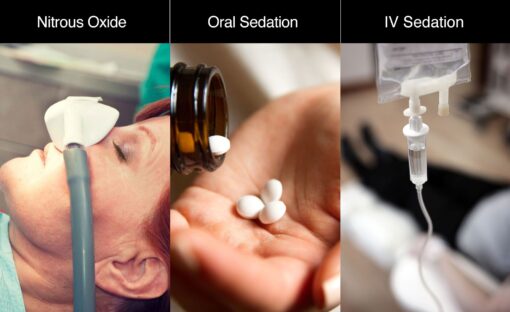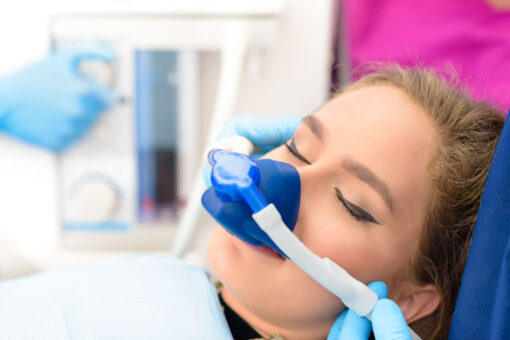Conscious sedation is a safe and effective way to manage a patient’s fear of dental treatment and improve their dental experience. It also helps reduce the risk of postoperative bleeding, which can be significant in young, healthy patients who are at a higher risk for this type of complication. Known commonly as “going under”, sleep dentistry is a procedure by which patients are given an anaesthetic. That induces a state of consciousness with reduced awareness and response to stimuli while retaining the ability to respond in an emergency. It is not general anaesthesia, rather it induces a state of relaxation so that patients feel no pain during treatment. In this article, we’ll discuss everything about conscious sedation in dentistry.
What is Conscious Sedation?
Conscious sedation is a low level of anaesthesia that a patient is still conscious enough to respond to voices and sounds in the environment. While a patient is receiving conscious sedation, they will be able to respond to verbal commands. The goal of conscious sedation is to relax the patient, but it also allows them to remain aware enough to respond to instructions and contact emergency medical personnel if they experience any complications during treatment.
Conscious sedation is given to patients in dental offices who are anxious about procedures like dental cleanings, fillings, root canals, or extractions. It can also be given to people who have high blood pressure or cardiovascular disease. Conscious sedation is a type of sedation used during medical or dental procedures. It is designed to help patients relax and reduce anxiety, while still allowing them to remain conscious and able to respond to verbal commands.
Which patients benefit from Conscious Sedation?
Younger patients with higher blood pressure or cardiovascular disease are at an increased risk for hemodynamic instability when getting dental treatment. These patients can be candidates for conscious sedation. For most dental procedures, the patient must be able to hold their head still, which is often problematic for patients.

During sleep dentistry, the patient is given medication, typically through an intravenous (IV) line or orally, that relaxes them and reduces their level of consciousness. The patient may still be able to communicate with the healthcare provider and respond to requests, but may not have a clear memory of the procedure. Patients who may benefit from sedation include those with a psychological disorder, such as a phobia that prevents them from receiving treatment. Those with a physical disorder, such as arthritis or Parkinson’s disease.
Limitations of Conscious Sedation in Dentistry
Conscious sedation limits a patient’s ability to respond to commands. This can be problematic if a patient cannot sit still during a procedure or if they are unable to keep their mouth open wide enough for an exam and treatment. Some patients may be unable to respond when they need to, such as when they experience pain or bleeding. They may also be unable to express the level of discomfort they’re experiencing, which can be especially problematic in a young child. Conscious sedation is sometimes accompanied by nausea, vomiting and diarrhoea. This can cause a patient to be unable to retain oral hygiene and self-care skills after the treatment.
Types of Conscious Sedation Available for Dental Patients
Conscious sedation is used in a variety of medical and dental procedures, including diagnostic tests, minor surgical procedures, and dental treatments such as extractions or root canals. The specific medication used, the method of delivery and the level of sedation will depend on the individual patient, the procedure being performed, and the preference of the healthcare provider. Dental patients who require sedation for treatment will usually be given either oral sedation or intravenous sedation.

Oral Sedation : It is administered as a pill or liquid and will usually result in a patient being calm.
Intravenous Sedation : It involves the administration of medications directly into a vein; this method often results in the patient being completely unconscious during treatment.
Sleep Dentistry is generally considered safe and effective, but as with any medical procedure, there are potential risks and side effects. It is important to discuss any concerns or questions with a healthcare provider prior to the procedure.
Sleep Dentistry and Patient Experience
In dentistry, conscious sedation is often used to help patients relax and manage anxiety during dental procedures. This type of sedation is designed to allow patients to remain conscious and responsive during the procedure. While reducing their level of anxiety and discomfort.
There are several methods of administering conscious sedation in dentistry, including oral sedation. Inhaled sedation (nitrous oxide or “laughing gas”), and intravenous (IV) sedation. The specific method used will depend on the individual patient, the procedure being performed, and the preference of the dentist.
Oral sedation involves taking medication by mouth prior to the procedure. Which helps to relax the patient and reduce anxiety. Inhaled sedation involves breathing in nitrous oxide, which helps to reduce anxiety and discomfort, but does not cause complete unconsciousness. IV sedation involves administering medication directly into the bloodstream through an IV line. Which allows for a more precise and rapid onset of sedation.
Conscious sedation in dentistry is generally considered safe and effective. And is used to help patients relax and manage anxiety during a wide range of dental procedures. Including cleanings, fillings, root canals, extractions, and more complex procedures such as full-mouth rehabilitation.
It is important for patients to discuss any concerns or questions about conscious sedation with their dentist prior to the procedure. The dentist can explain the specific type of sedation being used. The risks and benefits, and what to expect during and after the procedure.
Conclusion
Sleep dentistry is a safe and effective way to manage a patient’s fear of dental treatment. When administered properly, it can also help reduce the risk of postoperative bleeding, which can be significant in young patients. If you have any questions or concerns about the types of sedation, discuss them with your dentist before treatment. The friendly, relaxed atmosphere at Royal Dental Clinics is what sets them different from other dental offices. They pay meticulous attention to every aspect of your dental care to ensure that you have a positive experience from start to finish.






